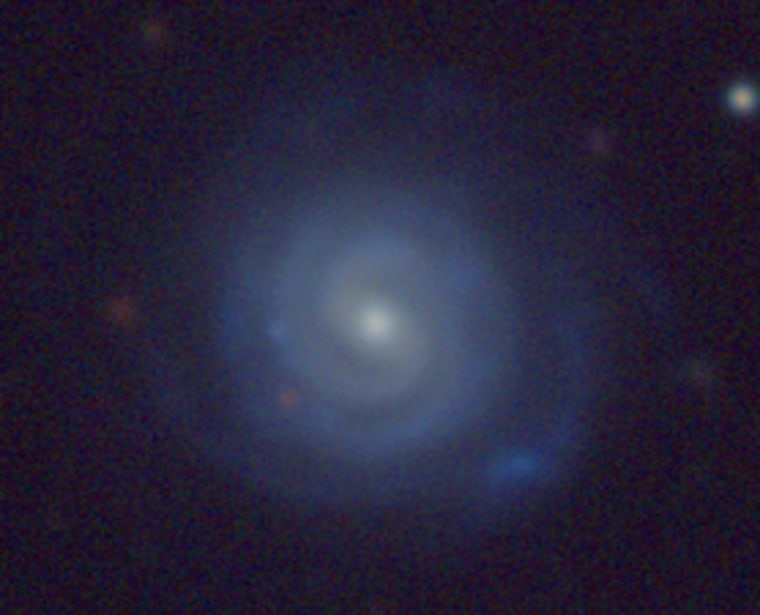Turns out the Milky Way is aptly named, with the overall color of our galaxy resembling the shade of fine-grained spring snow in early morning light.
Splitting the light into its component wavelengths, however, reveals a redder-than-average color for the Milky Way's core, and sky-blue spiral arms.
The portrait, pieced together from 1,000 similar galaxies culled from the Sloan Digital Sky Survey, shows the Milky Way as it would appear from perspective of another galaxy, albeit one whose inhabitants have vision similar to humans.
NEWS: Astronomers Spy Milky Way's Twin
"Understanding the color of the Milky Way allows us to compare other galaxies to it because for most galaxies all we can measure is how bright they are and what color they are. It's really frustrating that that's exactly what we can't measure about the Milky Way from our position inside it," astronomer Jeffrey Newman of the University of Pittsburgh told Discovery News.
The research shows the Milky Way is among the reddest of spiral galaxies, meaning that its star-forming days are coming to an end.
"It's entering its retirement when it won't make anything new," Newman said.
Based on the type and number of its stars, the Milky Way turns out to be a very typical galaxy, the analysis shows.
"We find that the color, the spectrum of the Milky Way is very close to the average of all the galaxies we see," Newman said.
NEWS: Vast Web of Dark Matter Mapped
That's comforting to astronomers, who ascribe to an idea called the Copernican Principle, which theorizes that just like the Earth isn't the center of the solar system and the sun isn't the center of the galaxy, we shouldn't expect to live in a special galaxy — at least in terms of the stars it contains.
For the analysis, scientists combined data from about 1,000 galaxies that have a similar number of stars and similar star birthrates as the Milky Way out of nearly 1 million galaxies in the Sloan survey.
"The Milky Way ended up being very bright for a red galaxy, but for all galaxies overall, it seems to be a little less luminous than we think it would be," Timothy Licquia, a graduate student in physics at Pittsburgh, told Discovery News. "We're not sure why."
Overall, the light from the Milky Way closely matches the color of a standard incandescent light bulb, well within the range of what the human eye perceives as white.
The research was unveiled Wednesday at the American Astronomical Society meeting in Austin.
